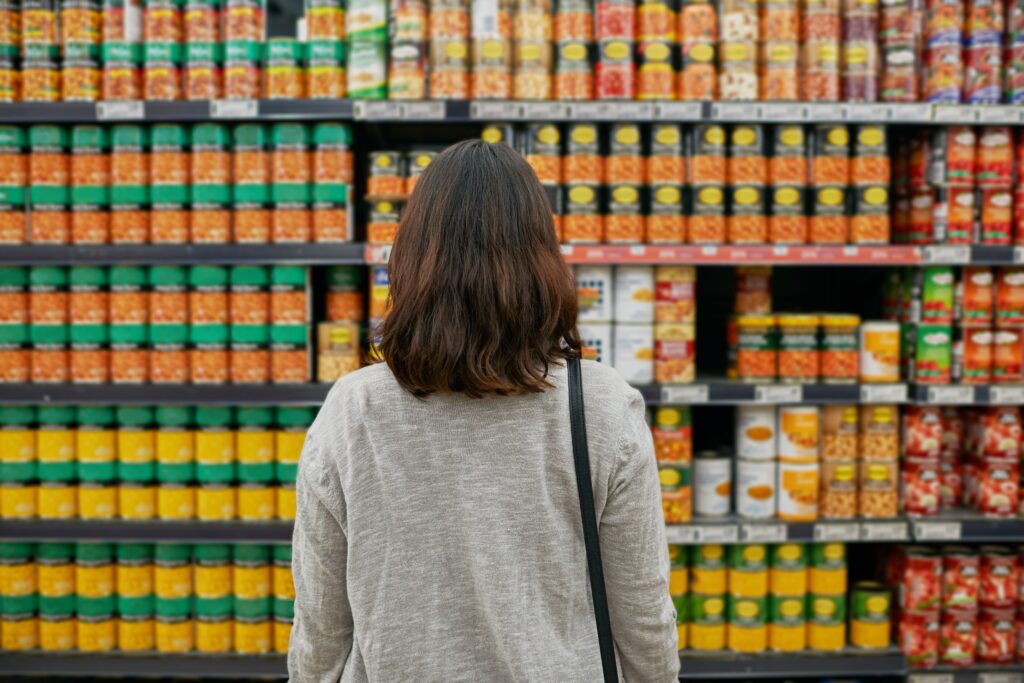
A deep dive into Corporate Accountability and the Global Index 2024
14 March 2025When I think of the Global Index, it is not just a company report card; it’s a critical tool for accountability and a watchdog for the food and beverage (F&B) industry. It provides a public-facing view of how companies are doing regarding nutrition, marketing practices, and product healthiness. We need this tool in our toolbox to ensure people can access healthy foods that contribute to healthier diets, and ultimately improved nutrition outcomes at the population level.
A key benefit of ATNi’s Global Index is that it tracks company performance over time, offering a snapshot of their progress (or lack thereof) towards producing healthier products. While it’s easy to say food companies are falling short of expectations, it’s far more impactful to say it with data in hand. With the Global Index 2024’s data-driven approach, including the evaluation of tens of thousands of food products, companies can no longer hide behind vague claims of improvement. It’s clear where they need to step up, and that’s invaluable for pushing the needle toward a healthier global food system. This transparency helps governments, policymakers, investors, civil society, and consumers hold these companies to account.
The Question: Do Companies Care?
A question, however, is whether these rankings matter to companies. Ostensibly, the answer seems to be no—at least not in the way we might hope. When the Global Index was launched in 2013, the hope was that companies would engage in a race to the top, improving their own practices, policies and products. However, 12 years after publishing the first index, improvement is marginal, especially regarding the healthiness of companies’ portfolios. While direct comparison between indexes should be interpreted with caution due to changes in methodology, what is clear is that rates in malnutrition in all its forms are not improving, and that voluntary regulation is not shifting the dial fast enough. ATNi is increasingly aiming to use the Global Index as a tool that empowers governments to push for regulatory changes and require companies to improve, while levelling the playing field. It’s about ensuring everyone else holds companies to account.
The findings of the Global Index 2024 paint an interesting picture of company performance. What surprised me was the fact that food product healthiness in low-income countries scored much lower (HSR 1.8) than in high-income countries (HSR 2.3). With the growing markets for packaged products in these countries, it is important that we investigate this further. There’s a window of opportunity for countries to implement critical actions to not follow in the footsteps of many high-income countries where consumption of large quantities of unhealthy, highly processed diets is leading to increases in obesity and associated non-communicable diseases.
What is also interesting is that the largest 30 F&B companies globally, those assessed in the Global Index 2024, only account for 23% of the market share. So, who are the other players contributing to the other 77% of food products? It’s clear that these small and medium enterprises (SMEs) are critical in supplying food for much of the world, particularly in Sub-Saharan Africa. Tracking these SMEs is an important next step for the Global Index in truly capturing the full scope of the food industry’s impact on public health.
Of course, the finding that no company has aligned their policies with the WHO guidelines to limit marketing of unhealthy foods to children under 18 is also a huge problem. Moving forward, how can the Global Index 2024 translate this data into real change? If the goal is to have markets supply 50% healthier products by 2030, what does it take to change industry practices? What are the carrots and sticks that incentivize or disincentivize change? One major avenue is through government regulation. It is important that governments have data about who supplies food to their citizens, which foods, how healthy are they — and from there to consider better regulation for industry. As an example, 108 countries have now implemented taxes on sugar-sweetened beverages (SSB) that have been effective in reducing dietary intake.

The Global Index 2024 outlines clear recommendations for governments and policymakers to implement mandatory policies and fiscal measures to increase access to healthy food. For example, the use of front-of-pack labelling systems based on government-endorsed Nutrient Profiling Models (NPMs), restricting marketing of unhealthy foods to children under 18 in alignment with the WHO guidelines, and implementing a system of taxes and subsidies to incentivise healthier product options. These measures would support the voluntary industry practices that some F&B companies are already implementing, such as formal nutrition strategies.
The future of the Global Index 2027
As the Global Index 2024 evolves, there’s room to expand its focus to include other aspects of a food system which supports health outcomes for both people and planet. For example, ultra-processed foods are a hot topic globally, and it would be fascinating to see a separate ranking based on the NOVA classification, which categorizes foods by their level of processing. Currently, over 60% of the American diet is ultra-processed, but how would companies fare if their products were ranked based on this criteria?
Another frontier for the Global Index 2024 is the integration of sustainability indicators. As consumers and policymakers increasingly demand more sustainable food production practices, tracking the carbon footprint, water usage, and land impact of food products could offer consumers a clearer understanding of the multiple health and environmental consequences of their food choices. Perhaps ATNi could also consider adding another indicator around plastic use. F&B manufacturers are the largest producers of single-use plastic in the world. Consumers are also very concerned here.
One thing that was great to see in the Global Index 2024 was the development of dashboards for the overall ranking, product profile, and responsible marketing. I hope this remains a focus for future indexes and to continue iterating on useability and functionality to drive engagement with this retail data. From my perspective, this dashboard is unique in its ability to showcase retail data compared to the available data on other dashboards (e.g. Food Systems Dashboard) in this space. I would love to see it include the environmental sustainability and climate side too, as I don’t think we can isolate them anymore. But I think ATNi, through the Global Index and dashboards, offers a standalone tool that complements all the food system monitoring data tools out there.
Ultimately, the goal of the Global Index 2024 is a tool to foster a positive transformation in food (retail) environments, along with other actors working towards the economic, physical, and social inequities that currently limit access to healthy diets. It’s about ensuring that healthy foods are subsidized, that unhealthy foods are taxed, and that transparent labelling becomes the norm. The ideal food retail environment would also include culturally appropriate options that reflect the diverse needs and traditions of different communities. Markets need to work for individual communities.
Governments have a critical role to play in regulating food environments to ensure that nutritious foods are accessible, that unhealthy products aren’t marketed to vulnerable populations (especially children), and that food systems are designed to promote overall well-being. For example, slotting practices where companies pay for the quantity and placement of retail shelf space and the promotion of those foods. So much of our food environment is architecturally designed, and we need to really push towards helping consumers, not making it so hard for them to access nutritious and healthy foods. Not to mention, unhealthy foods are not just sold in markets. Often, they are sold broadly across food environments in vending machines, in hardware stores, in places where you think, do we really need to have it everywhere?
A Call for Action
As the Global Index has evolved over the past 12 years and five iterations, it has become a critical tool for tracking F&B markets’ policies, practices, and progress towards healthier products. But the next step is crucial: spreading this knowledge and ensuring it reaches government officials, policymakers, investors, and companies to take action on this data for meaningful change.
A note from ATNi: A big thank you to Jessica Fanzo for sharing her insights on the Global Index! We agree that the debate on UPFs is raising critical questions about their health impacts. In response, in our upcoming 2025 Retail Index, we will incorporate data on specific food additives (colorants and flavourings) as proxies for ultra-processing in the retail assessments.

